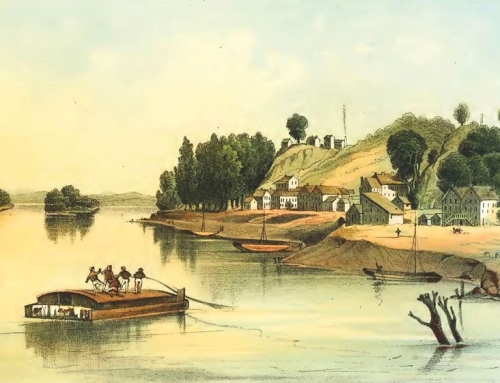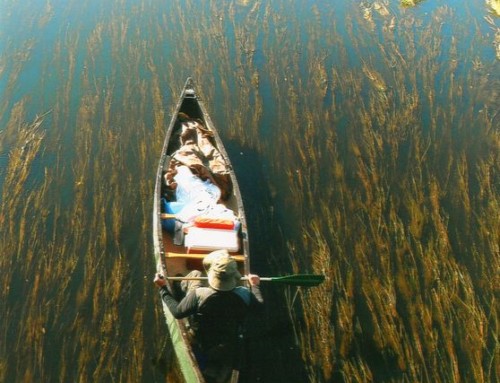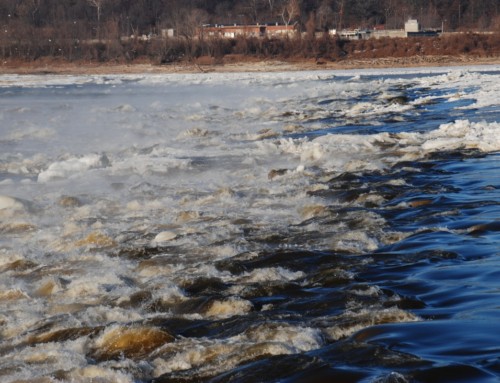If you are bored with summer television and looking for something different, say a new reality show about three cooky guys who travel the length of the Mississippi River using their own ingenuity to solve (predictable) dilemmas, you should tune in to A Mississippi River Quest, airing now on National Geographic Channel. If, however, you are looking for a show that has something informative to say about the history, culture, and ecology of the Mississippi River—keep looking.
The show documents the 2,300 mile journey of an intrepid team of “adventurers”: a professional fisherman, a former marine/scientist/anti-plastic crusader, and a filmmaker. We are told that they are on a journey to get to know the river: “its people, its history, its wildlife, its industry, and its future.” If only.
So what will you learn from this show?
- The river is narrow and shallow in its upper reaches.
- If you drive a jet boat at high speeds across this narrow, shallow river, you will probably fuck up the boat.
- It can get cold in northern Minnesota—even in September!—and you won’t always have cell phone service.
- Bill, the filmmaker, hasn’t caught a big fish in his life.
- Marinas along the Upper Mississippi close before the end of October, which means your support crew has to carry gas cans to you from sources inland.
- The Mississippi can flood, even in the fall.
- If you drive a pontoon boat down the Mississippi River during high water, you will probably fuck up the boat.
- A floating refrigerator has remarkable buoyancy and can make for a really cool shot if you stick someone inside who pretends to paddle.
- Bill finally caught a big fish.
After the first 20 minutes or so of the first episode, we really didn’t learn much of anything about the river’s people, history, wildlife, industry or future. It looks to me like they did very little research to prepare for the trip. They repeat without question the barge industry propaganda about the efficiency of shipping goods on the river. Other transportation industries could make the same case if they received a similar amount of welfare from the federal government. Near the end of the third and final episode, we get a token two-minute segment on the environmental consequences of our attempts to manage the lower Mississippi River, especially the degradation of the delta wetlands, which I’m glad they included. But, we get nothing about the economic cost and ecological impact of the lock and dam system on the upper river that exists solely to make the river navigable for very large boats.
I was also troubled by a series of perplexing continuity problems: in the first episode, we see some shots of the guys in kayaks and canoes and other times just in canoes and we never get an explanation; as the narrator talks about his amazement that they had not yet left Minnesota, we get a shot of the river at Pike’s Peak State Park, which is in Iowa; as the dudes experience high water along the upper river, we get a feature on the 1927 flood, which was along the lower river and not the 1993 flood that devastated the areas they were boating through. OK, maybe I notice those things because I’m a total geek for the Mississippi River, but they still bugged me.
In fairness, I didn’t hate everything. The team knows how to take a pretty picture, so the series is full of them, and the segment with Mike Valley (one of the few remaining commercial fishermen on the river) was very fun. I’d also say the guys seem likable enough; heck, I’d take a boat trip with them on the Mississippi River; at least one of us would know something about the people, history, wildlife, industry, and future of the river.
© Dean Klinkenberg, 2010



